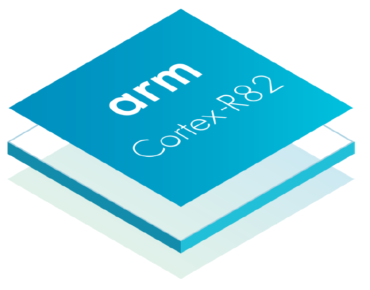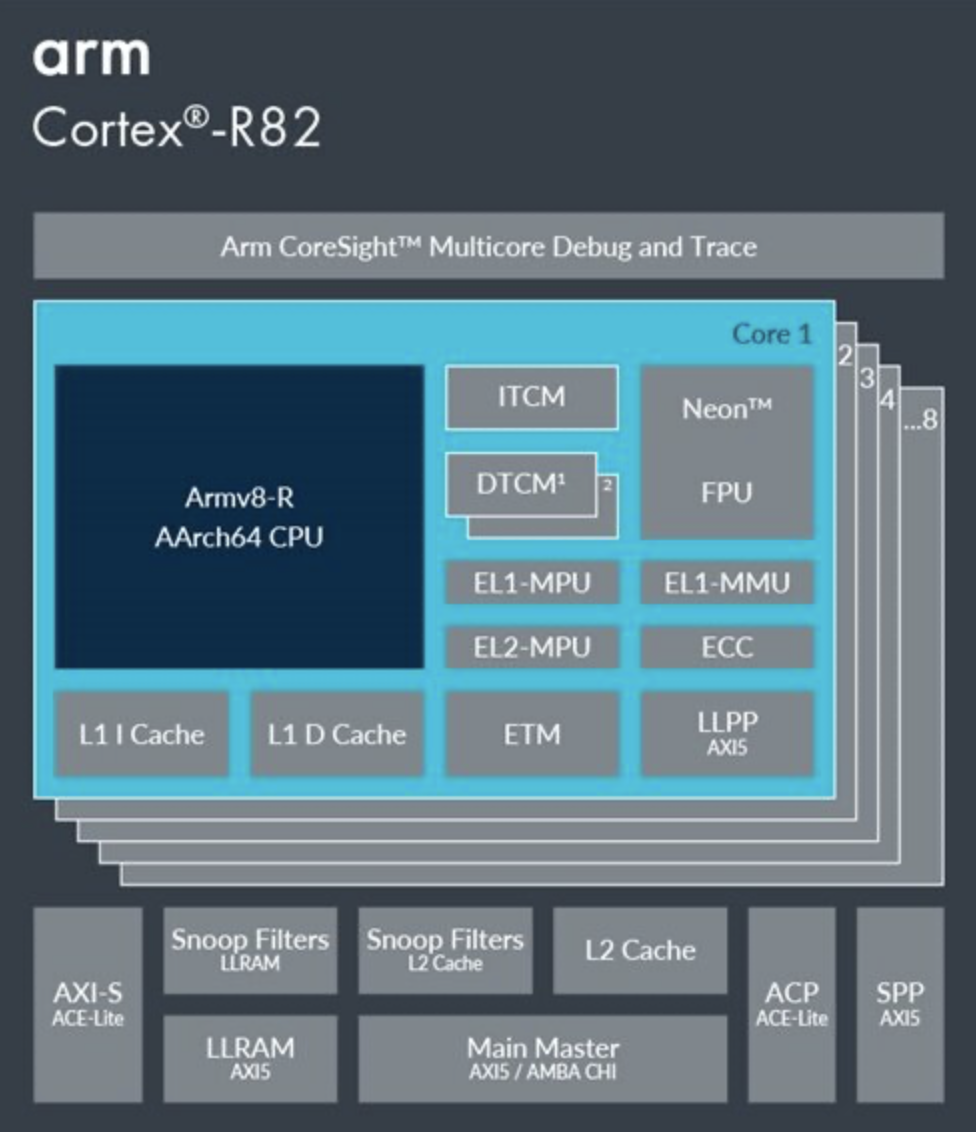Arm’s First 64-bit Cortex-R Chip Adds ‘Computational Storage’

No moss is growing under Arm Ltd. as the technology sector waits to see if and when a buyer emerges for the IP chip vendor.
Arm this week unveiled its first 64-bit real-time processor, the latest in its Cortex-R family that includes Linux support along with an emphasis on enterprise storage applications. That strategy reflects the growing need to move processing and analytics closer to data.
The 64-bit Cortex-R82 adds “computational storage” features such as support for Linux microservices and cloud-native software development via a memory management option. It also addresses the need to address larger memory capacity, which the company said is emerging as a barrier to performance when running Linux or emerging computational storage devices.
“Computational storage is all about making storage devices smarter to process the data directly where it is stored,” the chip maker noted.
Depending on the workload, the Cortex-R82 is touted as doubling the performance of previous Cortex-R5 and -R8 generations while leveraging the chip vendor’s presence in legacy enterprise storage infrastructure, including drive controllers. Storage controllers traditionally run bare-metal workloads. Looking to expand those capabilities, the Cortex-R82 includes an optional memory management unit that allows operating systems to run directly on the storage controller.
That creates “the opportunity for new and improved applications” running on Linux-based microservices, said Neil Werdmuller, Arm’s director of storage solutions. The company said the real-time processor also offers its Neon technology for accelerating machine learning workloads that account for much of the computational storage requirements in enterprise datacenters.
The R82 processor also aims to address performance shortfalls such as memory access barriers along with the growing enterprise demand for running Linux-based services. “There is a need for higher performance, real-time compute with more addressable space and the ability to run Linux to enable the next generation of computational storage devices,” Werdmuller noted in a blog post.
Along with Linux support, the real-time processor includes access for up to 1Tb of DRAM address space while reallocating computing resources for different workloads. Meanwhile, the optional memory management unit supports Linux and other high-end operating systems as well as application code and a lengthy list of database applications.
“The ability to run Linux gives developers a whole new set of software tools and technologies, such as Docker and Kubernetes, to use for their storage applications, providing an accelerated method of implementation,” Werdmuller added.
Arm joins the growing list of chip vendors emphasizing local processing of data as a way of reducing latency by eliminating the movement of large files, among other architectural tweaks. The payoffs include database acceleration, faster data analytics and speedier applications such as image and video processing for streaming apps.
The chip vendor’s computational storage approach is designed to streamline data storage, retrieval and processing by replacing the traditional data call from storage with a straightforward “operation” request. That front-end step eliminates the need to move data, instead processing the operational request in storage before delivering the desired result.
Arm said the approach is aimed at the growing number of data-driven workloads such as machine learning models that are outstripping current datacenter server capacity. Meanwhile, Linux support expands the range of “on-drive” workloads.
“Running Linux and associated software tools directly on the drive facilitates computational workload management and file system recognition to perform the on-drive computation and generate insight on the drive, greatly reducing data movement, latencies and energy consumption,” said Werdmuller.
A flexible storage controller also allows a balancing act whereby different workload types running on controller can be adjusted depending on demand. For example, the R-82 would facilitate real-time storage workloads during peak demand, then switch to data analytics tasks during off-peak hours.
Arm said the Cortex-R82 four-core cluster is based on 5-nm process technology. The cluster configuration integrates 1Mb of L2 shared cache memory. Maximum clock frequency exceeds 1.8 GHz, and performance tops out at 5.82 MHz based on the CoreMark CPU and embedded microcontroller benchmark.
Among the Linux OS distributions supported by the Cortex-R82 are Red Hat Enterprise Linus, SUSE and Ubuntu.
The company said it Cortex-R82 design is available now to it "lead partners." First silicon is expected by the fourth quarter of 2021.
--Editor's note: This story has been updated with availability information.
Related
George Leopold has written about science and technology for more than 30 years, focusing on electronics and aerospace technology. He previously served as executive editor of Electronic Engineering Times. Leopold is the author of "Calculated Risk: The Supersonic Life and Times of Gus Grissom" (Purdue University Press, 2016).











